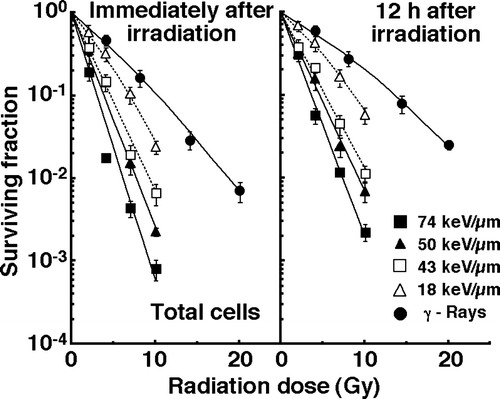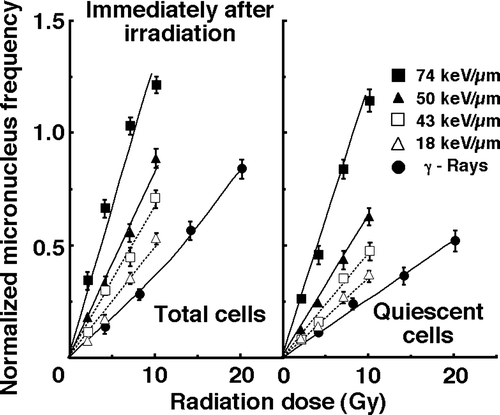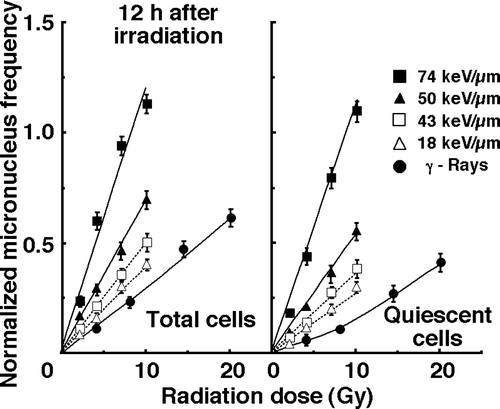Figures & data
Figure 1. Cell-survival curves for total tumor cell populations as a function of radiation dose immediately after irradiation and 12 hours after irradiation are shown in the left and right panel, respectively. Open triangles, open squares, solid triangles, and solid squares represent the surviving fractions after irradiation with carbon ion beams having an LET of 18, 43, 50, and 74 keV/µm, respectively. Solid circles represent the surviving fractions after γ-ray irradiation. Bars represent standard errors.

Figure 2. Dose-response curves of normalized micronucleus (MN) frequency for total and quiescent cell populations as a function of radiation dose immediately after irradiation are shown in the left and right panel, respectively. Open triangles, open squares, solid triangles, and solid squares represent the normalized MN frequencies after irradiation with carbon ion beams having an LET of 18, 43, 50, and 74 keV/µm, respectively. Solid circles represent the normalized MN frequencies after γ-ray irradiation. Bars represent standard errors.

Figure 3. Dose-response curves of normalized micronucleus (MN) frequency for total and quiescent cell populations as a function of radiation dose 12 hours after irradiation are shown in the left and right panel, respectively. Open triangles, open squares, solid triangles, and solid squares represent the normalized MN frequencies after irradiation with carbon ion beams having an LET of 18, 43, 50, and 74 keV/µm, respectively. Solid circles represent the normalized MN frequencies after γ-ray irradiation. Bars represent standard errors.

Table I. Relative biological effectiveness of carbon ion beams* compared with γ-rays in total and quiescent populations.
Table II. Dose-modifying factors after repair of potentially lethal damage.*
Table III. Dose-modifying factors for quiescent cells relative to total tumor cells.*